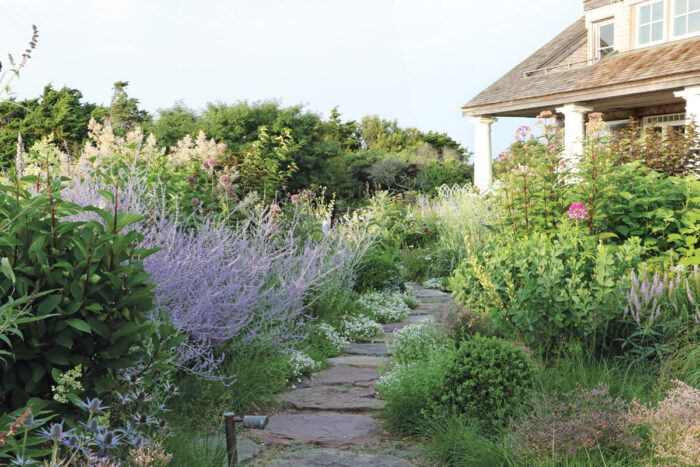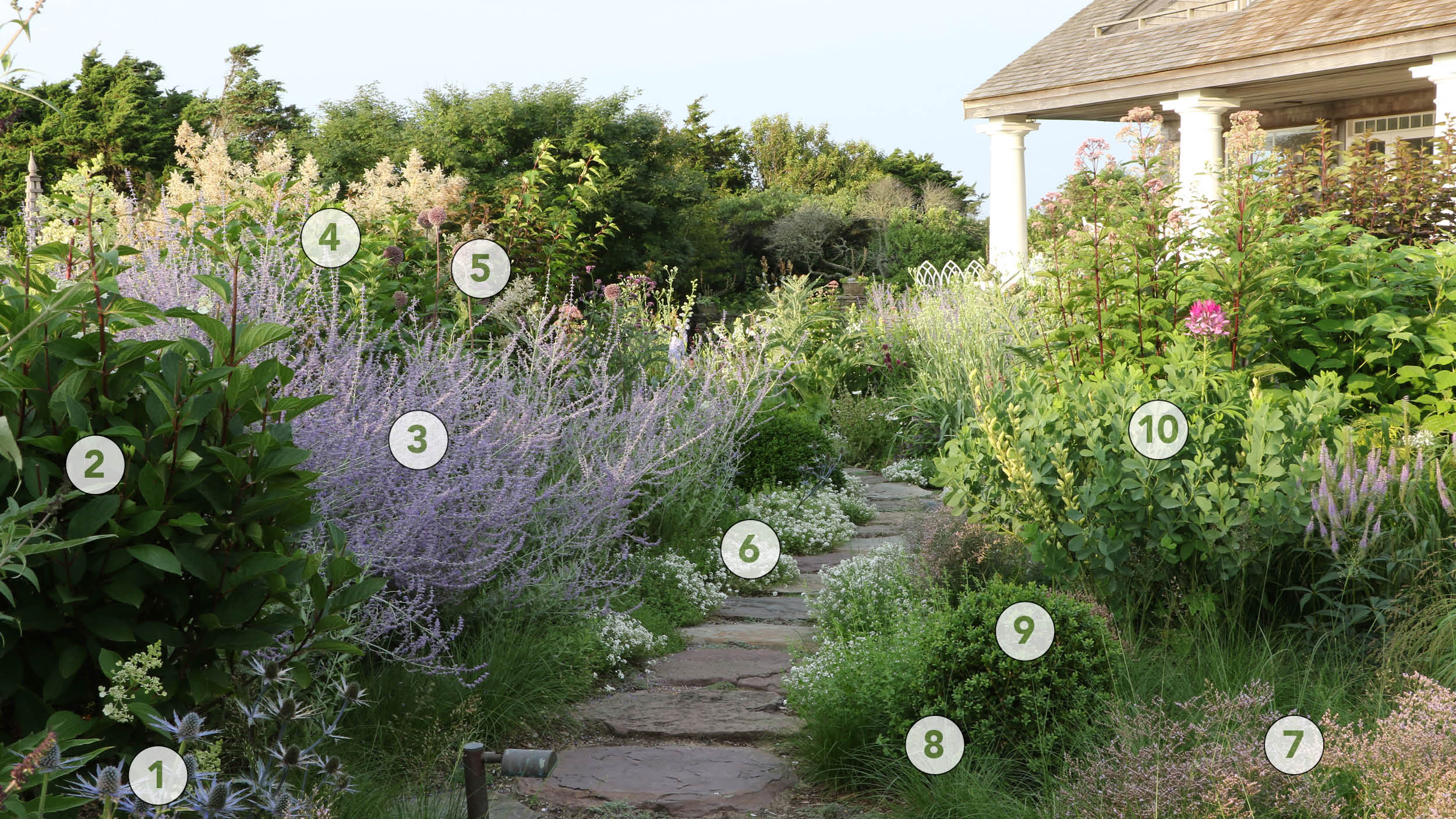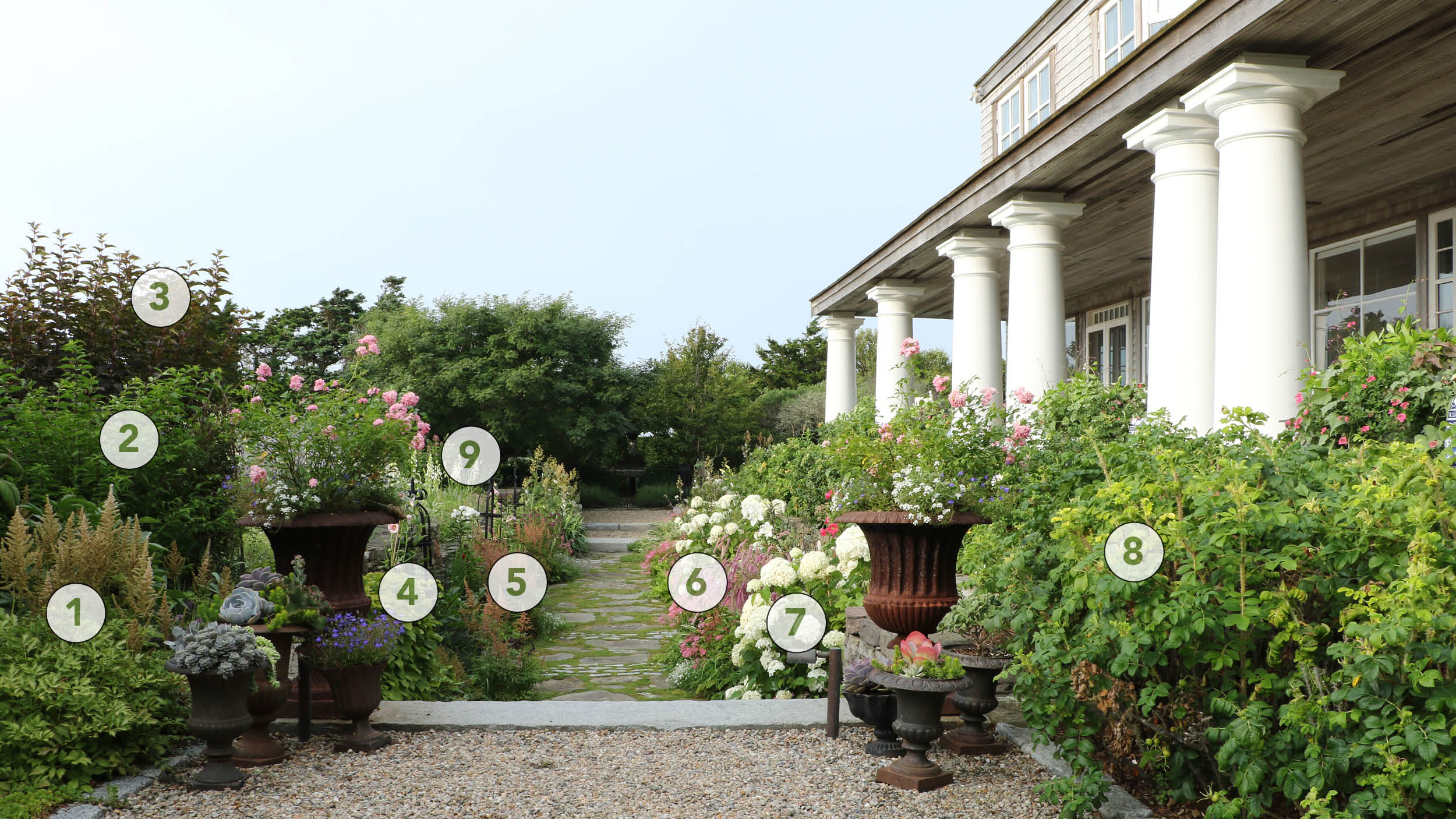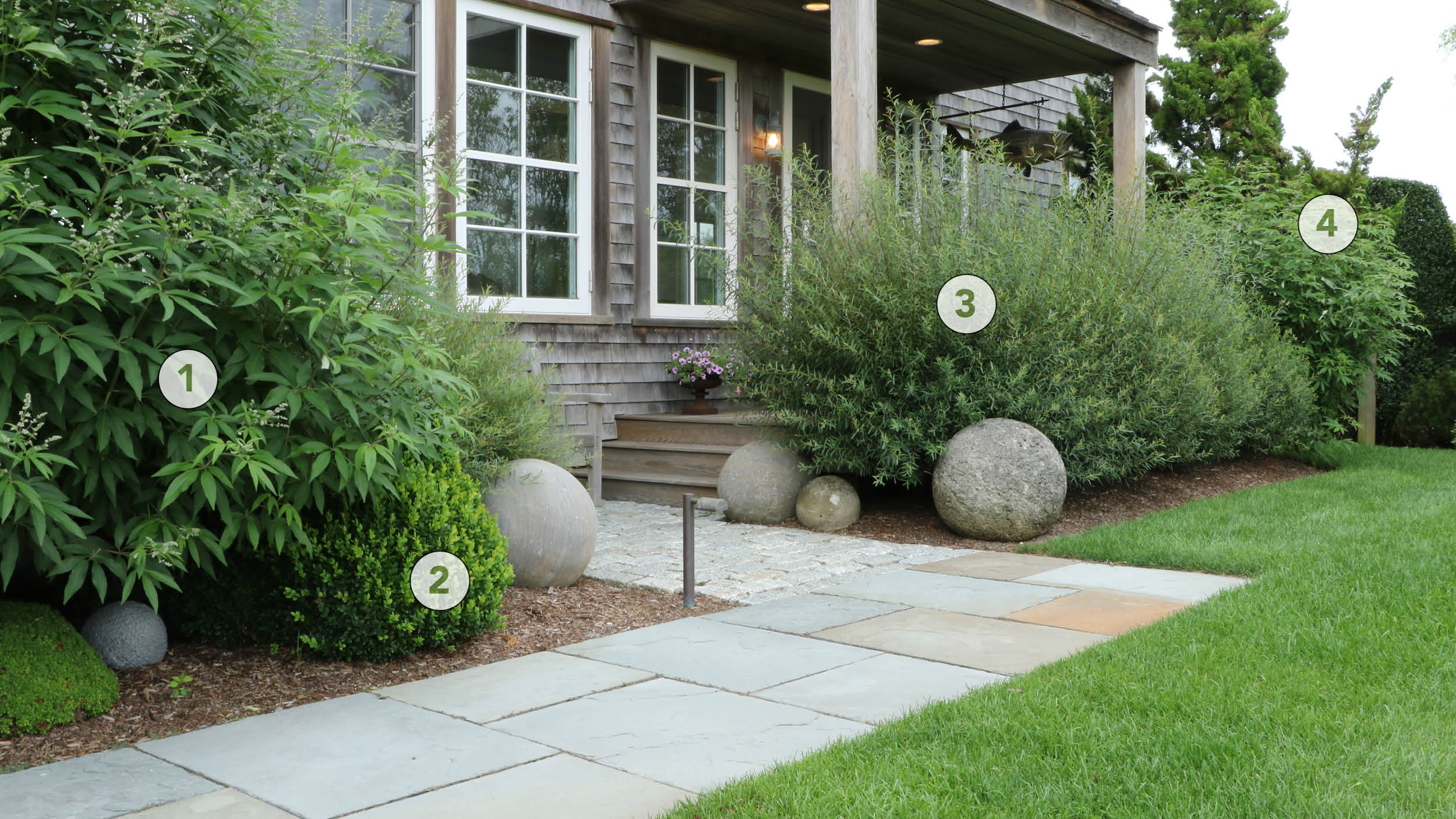
Susan Burke’s home and garden on the Nantucket shoreline off the coast of Massachusetts were designed from scratch when she and her late husband first purchased the property. Featuring tall borders of naturalistic plantings and hardscaping that weave off into nature in the backyard, this space also has a more formal garden in the front yard consisting mostly of native plants. A large dune comes up from the beach, where a buffer of native flora divides the garden from the beach beyond.
While it looks pristine in the middle of the growing season, there are many challenges that Susan and her longtime landscape designer and collaborator Julie Jordin face in maintaining this space. Punishing winds and storms can cause great damage, especially during winter. The soil is lean and sandy and also exposed to salt, which means that picking sea-loving plants is an absolute must. Additionally, the island of Nantucket is overrun with deer and rabbits that were introduced to the island, and the lack of natural predators means that grazing is intense. Despite these obstacles, Susan and Julie are able to employ a series of strategies to maintain dense, healthy planting beds.
Below, plant IDs are featured from three areas of the garden: the upper perennial border, the section surrounding the sunken “ha-ha” garden, and the beds near the front porch. Use these callouts to recreate the designs, or find a new favorite plant to add to your own garden.
- ‘Big Blue’ sea holly (Eryngium ‘Big Blue’, Zones 4–9)
- ‘Kyushu’ panicle hydrangea (Hydrangea paniculata ‘Kyushu’, Zones 3–8)
- Russian sage (Salvia yangii Perovskia atriplicifolia, Zones 5–9)
- White fleeceflower (Persicaria polymorpha, Zones 5–9)
- ‘Summer Drummer’ allium (Allium ‘Summer Drummer’, Zones 4–9)
- Sweet alyssum (Lobularia maritima, annual)
- Sea lavender (Limonium latifolium, Zones 4–9)
- Prairie dropseed (Sporobolus heterolepis, Zones 3–9)
- NewGen Freedom® boxwood (Buxus ‘SB 300’, Zones 5–8)
- Blue wild indigo (Baptisia australis, Zones 3–9)
- ‘Fascination’ Culver’s root (Veronicastrum virginicum ‘Fascination’, Zones 3-8)
- ‘Gateway’ Joe Pye weed (Eutrochium maculatum ‘Gateway’, Zones 4–8)
- ‘Milk and Honey’ Chinese astilbe (Astible chinensis ‘Milk and Honey’, Zones 4–9)
- Purple beautyberry (Callicarpa dichotoma, Zones 5–8)
- Diabolo® ninebark (Physocarpus opulifolius ‘Monlo’, Zones 3–7)
- Climbing hydrangea (Hydrangea anomala petiolaris, Zones 4–9)
- ‘Bressingham Beauty’ astilbe (Astilbe ‘Bressingham Beauty’, Zones 4–9)
- ‘Lilac Squirrel’ sanguisorba (Sanguisorba hakusanensis ‘Lilac Squirrel’, Zones 4–8)
- Incrediball® smooth hydrangea (Hydrangea arborescens ‘Abetwo’, Zones 3–8)
- White rugosa rose (Rosa rugosa* ‘Alba’, Zones 3–8)
- Giant summer hyacinth (Ornithogalum candicans, Zones 6–10)
- Chaste tree (Vitex agnus-castus, Zones 6–9)
- Boxwood (Buxus, Zones 4–9)
- Dwarf purple willow (Salix purpurea ‘Nana’, Zones 4–8)
- ‘Torulosa’ Hollywood juniper (Juniperus chinensis ‘Torulosa’, Zones 5–9)
*This plant may be invasive in some areas.
—Diana Koehm is the assistant editor.



















Comments
Log in or create an account to post a comment.
Sign up Log in